All about the flower ceropegia
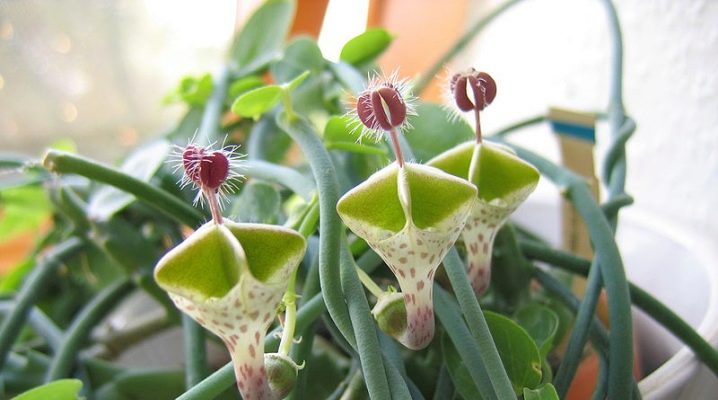
The succulent ceropegia is native to countries with hot and dry climates. Under natural conditions, the ampelous plant is found in tropical thickets in southern Africa, northern Australia, India, China and the Canary Islands. This fact did not prevent him from settling in domestic apartments and offices. Plants do not require painstaking care, which only spurs interest in them from flower growers.

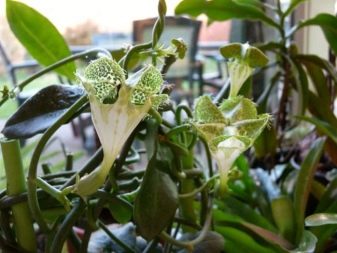
Botanical description
The name of the succulent is divided into parts: keros - from the Greek "wax" and pege - translated as "fountain". In combination, the words form the concept of "candlestick" or "candelabrum". It is with the latter meaning that the shape of the flowers of a tropical succulent is compared. During flowering, they really can be compared to the chandelier cups with candles. In the axil of the umbellate inflorescence, 2-3 flowers are formed about 2.5 cm long. The corolla in the form of a water lily, swollen at the base, is colored by nature in pink or light purple.
Ceropegia is a perennial climbing herb. It has a tuberous root system, thickened roots that accumulate water. Thick and fleshy leaves also store moisture.
They are lanceolate or fancy - in the form of a heart. The juice inside is usually transparent in appearance, rarely milky. In some species, leaves are completely absent.
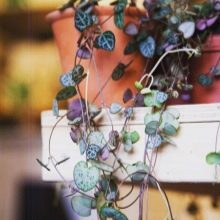

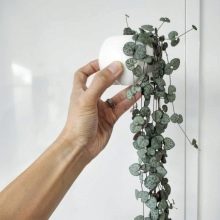
On the stems of individual ceropegia, nodules may appear, forming roots and shoots. Single flowers are formed inside the leaf sinus. Sometimes they are collected in umbrellas. Due to their bizarre shape, succulent flowers resemble lanterns, antennas, fountains, parachutes and even necklaces.
The special structure of the flower petals forms a kind of trap for insects. Getting inside and trying to get out, they carry pollen on themselves and so pollinate the plant.

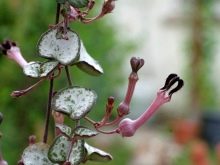
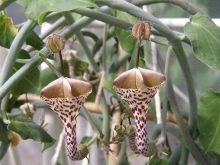
Varieties and varieties
There are a huge number of varieties of the succulent ceropegia, but only a few of them are grown at home. In general, all ceropegia suitable for cultivation in room conditions are subdivided into several groups.
-
Cultivars with thinner, not fleshy leaves.
-
Tuberous plants with thick or flat leaves.
-
Thin, not juicy stems.
-
The stems are very saturated with plant juices in the absence or presence of tiny leaves.
-
Climbing plants with fleshy stems and succulent leaves.
In home floriculture, the following types are more common.
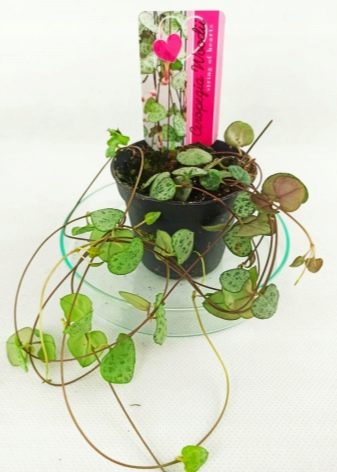
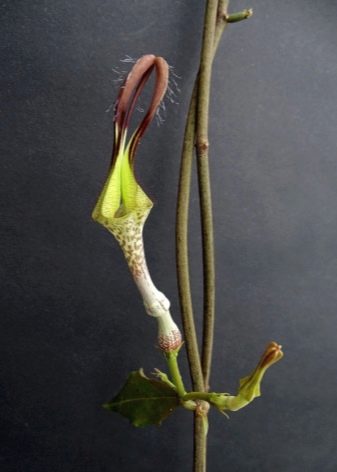
Ceropegia Wood
Of all the indoor Ceropegia, Ceropegia woodii is the most abundant. The plant has a wonderful marbled color of the leaves. In buds, they can be compared to a necklace made of green or purple beads. Succulent flowering occurs regardless of the season. The flowers themselves look very decorative and are comparable to an extinguished candle.
In the summer, the so-called miniature glomeruli appear on the branches. When the glomerulus hits the ground, roots appear and a daughter plant is formed.
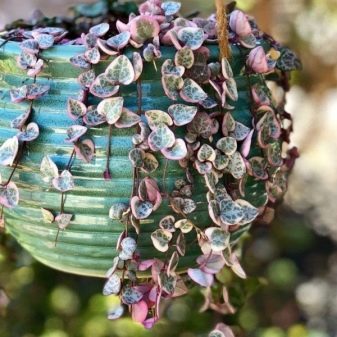
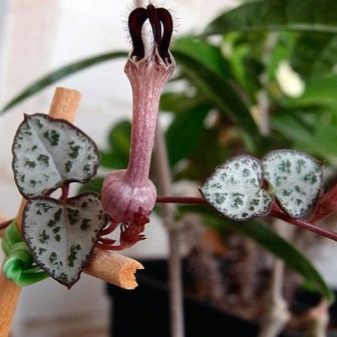
The roots of an adult succulent are similar to potato tubers. During transplantation, this quality is very useful, since they are not affected by a change in position. For flower growers who do not have time to care for indoor plants, Wood's ceropegia is ideal.
The ampelous plant has rather plastic branches that fit well into a simple shape, which gives it even greater decorative effect.The only thing to consider is that when transplanting, the branches will have to be unraveled. This should be done carefully and slowly.
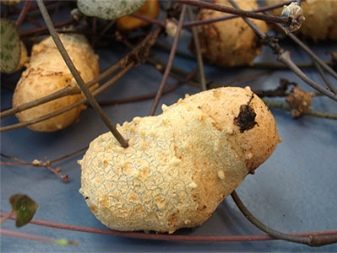
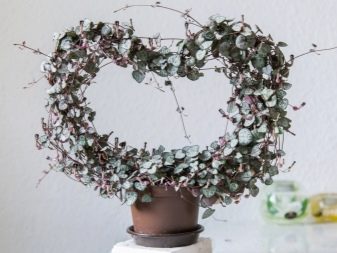
One of the most spectacular varieties of this type is "Silver Glory" with amazing white leaves with a green cut. Looks no less attractive and representative of the variety "Green Love".
Another variety is variegated ceropegia... It differs only in color due to its inability to produce chlorophyll. The stems and leaves of the succulent are covered with whitish spots, which does not spoil the plant at all, but gives it a peculiar beauty.
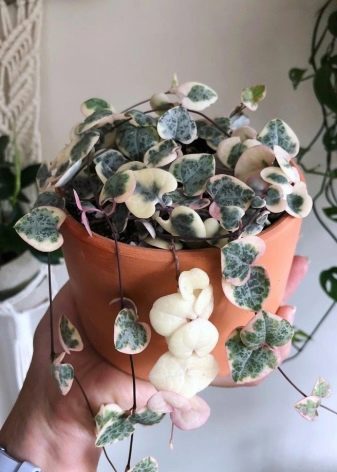
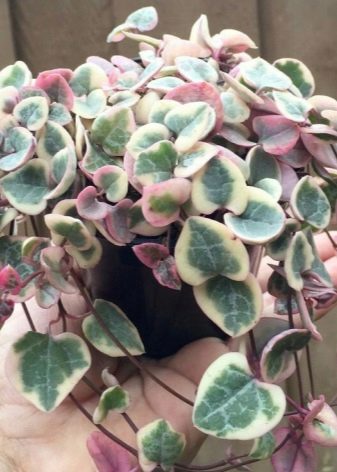
Sanderson's ceropegia
Ceropegia sandersonii are distinguished by long, fleshy stems of deep green color and smooth texture.... Medium-sized dense leaves cover the stem in pairs and not densely along the entire length. The branches need support, otherwise they easily break. Dry branches can serve as a support, so the plant will look even more original.
Succulent flowering continues throughout the year. Sluggish and fallen flowers give way to fresh buds. The flowers look incredibly decorative: from five connected petals, a kind of flashlight is formed. Petals with fringed villi along the edge. The flower itself is amazingly delicate and beautiful.
Fits perfectly into the landscape planting plan. The care is compatible with most succulents, which allows you to grow plants in one container.
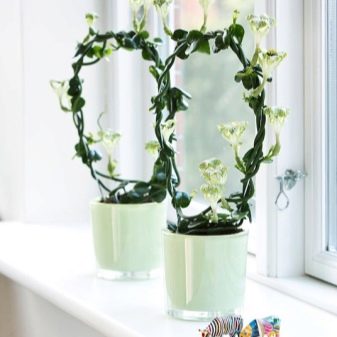
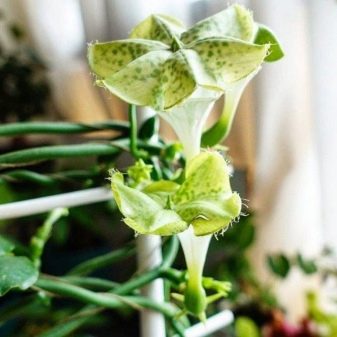
Ceropegia Barclay
The branches are more elastic and pliable, like vines. Ceropegia Barkleys has many airy nodules that can be easily removed from the base. This feature contributes to the good reproduction of the plant.
This variety of ceropegia has medium-sized rare leaves - about 2.5 cm long. In some cases, they can grow up to 5 cm. An ampelous plant looks great in a hanging planter.
Like other species, the flowers of Barclay's ceropegia are in the form of an elongated tube, with five petals collected at the top. They are greenish-silvery, which makes them invisible against the background of the stem and leaves.
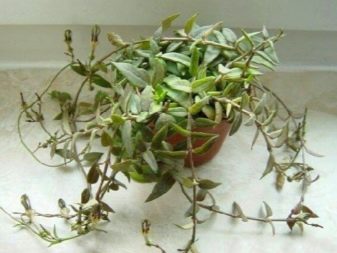
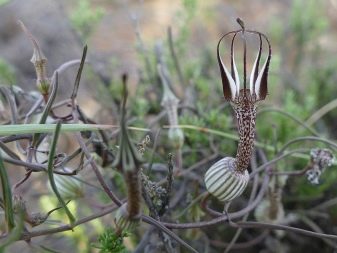
Linearis
Ceropegia Linearis is very similar to Wood's subspecies, which is why it is often referred to as its variety. Their shoots are really very similar, and the crown is more evenly colored green. It is made up of lanceolate or heart-shaped leaves.
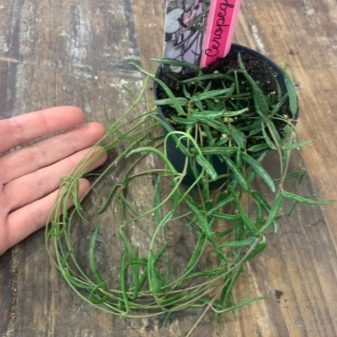
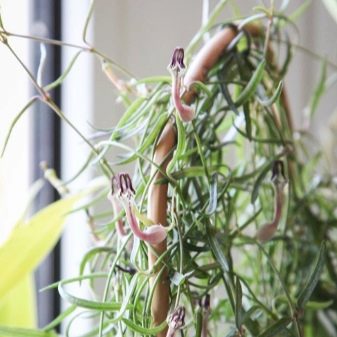
Bossery
The stem of ceropegia bosseri is made up of short "scaly" internodes, distributed in a checkerboard pattern. The shoot itself is thick, painted in a dark green tint. Covered with small linear leaves.
An inflorescence of several flowers releases directly at the crown.

Armandy
Ceropegia Armandii has an unusual, dark green, rectangular stem. "Needles" on the shoot are staggered.
When blooming, a single flower blooms at the top of the shoot. Compared to other species, Armandi's corolla is unusually short. The subspecies is in many ways similar to Bosseri - with a difference in the structure of the stem and the number of buds.
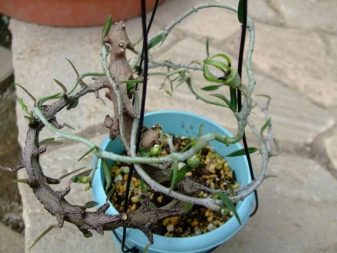
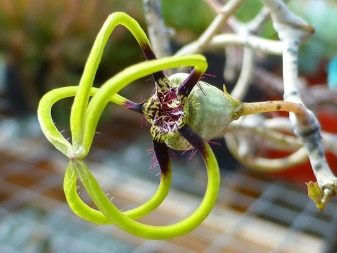
Other types of tropical succulent are more rare, but still found among indoor plants.
- African ceropegia (from Latin afrikana). It has long creeping stems with miniature oval green leaves. Amazing flowers in the form of lanterns with a narrowed bracts and five pale green petals.
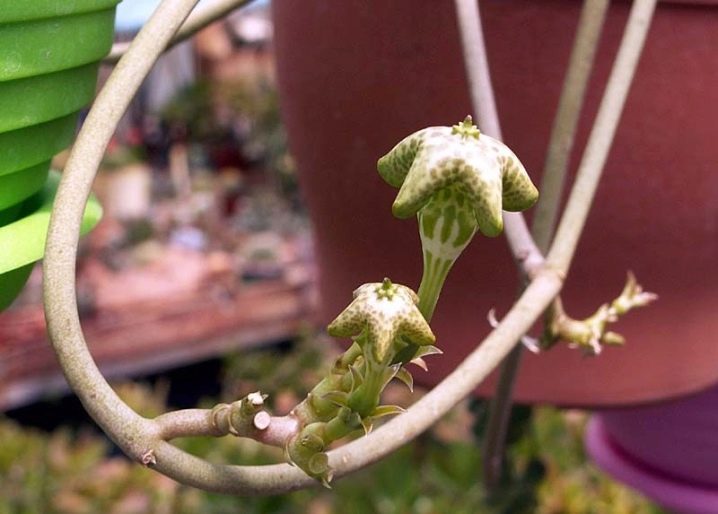
- Stapeliiform ceropegia (from Latin stapeliiformis). Differs in thick and extended stems, strewn with small tubercles. The triangular leaves are also smaller than average. The atypical shape of the flowers is in the form of a glass in which burgundy and white wine splashes.
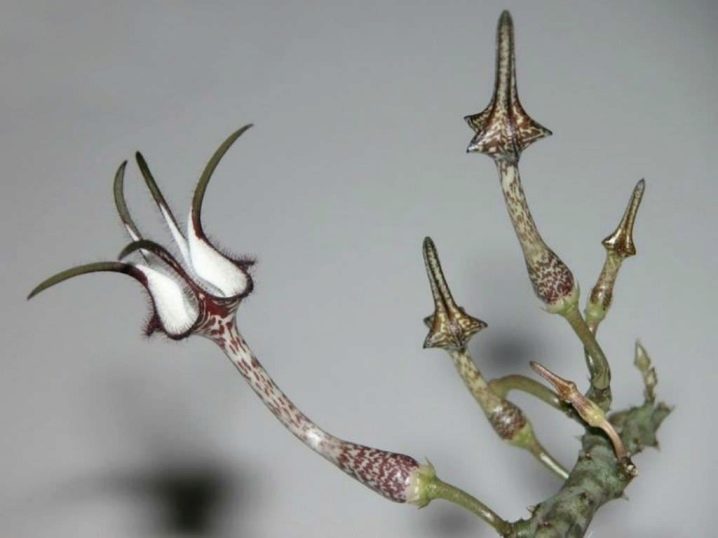
- Graceful ceropegia (from lat. Elegans)... Ampel plant, on the thin shoots of which leaves-hearts and white five-petal buds bloom.
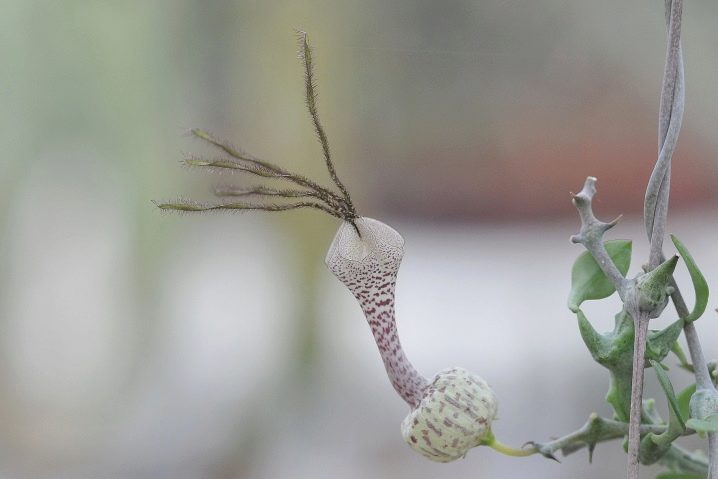
In addition to the main types and varieties, there are no less interesting, but not as popular: Simona, Ampliata, Orange River, Highgart, Durban.
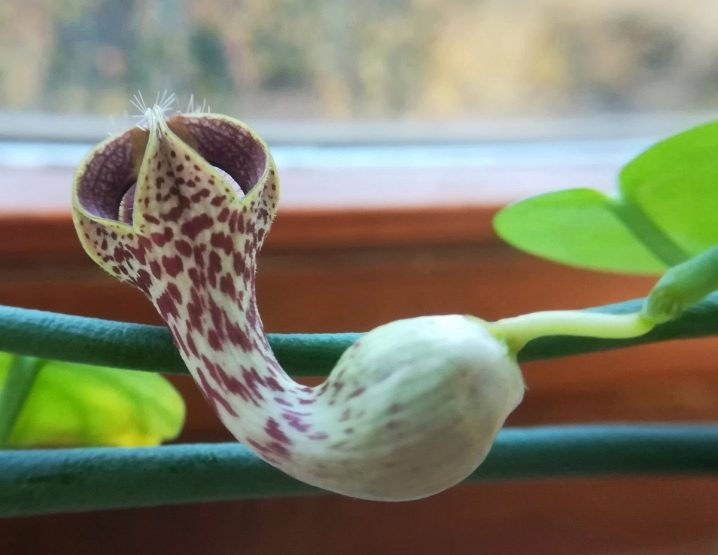
Landing
The root system of a young vine is developing intensively, so every spring it needs a transplant.More mature specimens need a transplant every 2-3 years.
Selection of soil and capacity
If you want to grow this succulent, you should first pay attention to the soil. She should have good aeration. You can add sand or a mixture of perlite and sand to it. When planting this culture, they often use a soil intended for cacti, with the addition of a leaf substrate.
If you want to prepare the soil yourself, it is recommended to use certain proportions and additives. It will be optimal to combine 3 parts of leafy land with 2 parts of sod land, the same volume of humus and 1 part of sand.
Good drainage will be required. A pot with holes in the bottom will do.
If they are not provided by the manufacturer, you can do them yourself. Otherwise, the water can stagnate, provoking rotting of the root system. The best option is to plant in a clay container.
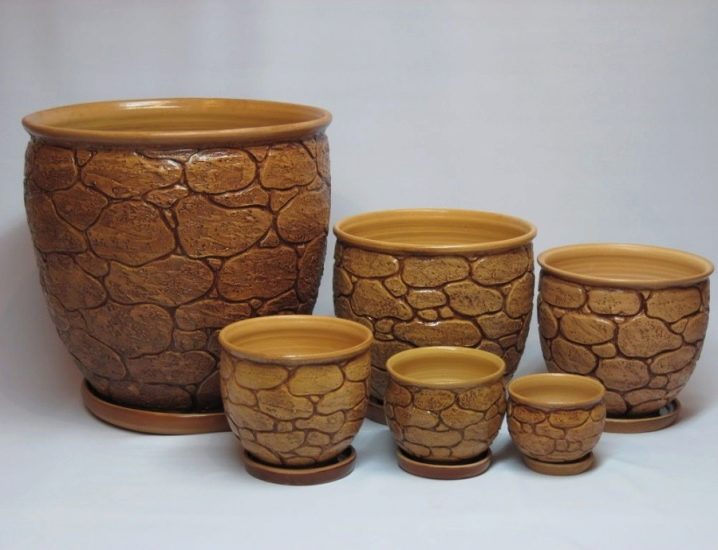
Technology
When planting, the tubers must be carefully positioned over the drainage and a small layer of substrate, sprinkling the top with the remaining soil mixture. It is important that the ground completely covers the rhizome, although for some species the option is suitable when the tubers are partially located above the level of the earthen coma.
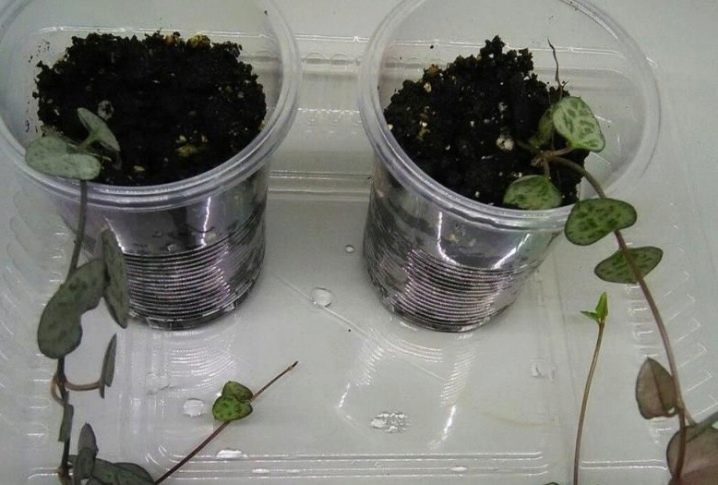
Care
Lighting
For all types of succulents of ceropegia, well-sunlit areas are preferable. But direct sunlight is harmful to the succulent. When growing on a windowsill, it is preferable to choose the south side, and in a sunny lunchtime, shade the glass with a light curtain. But don't be zealous with the shadow. With too little lighting, a decrease in the size of the leaves and the absence of flowering are noted.
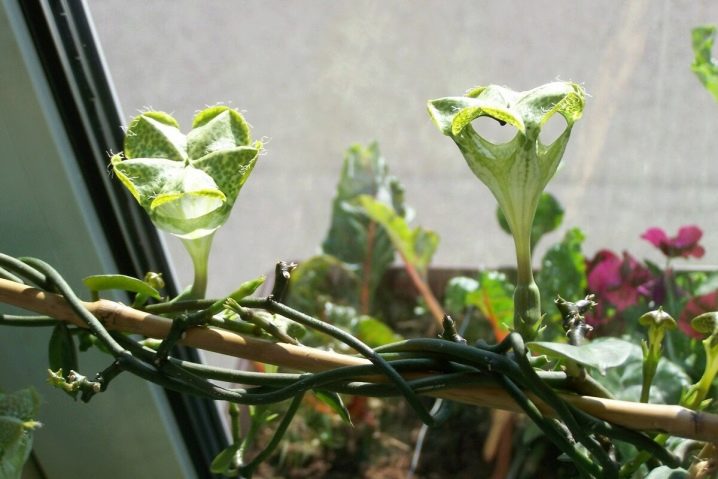
Temperature
At the stage of active development, you need to keep the bush indoors at + 20 ... 25 degrees. In the autumn, the temperature drops to +16 degrees. In winter, this figure goes to +14 degrees and no less. Prolonged coolness is detrimental to a heat-loving plant.
Temperature changes at the border of day and night do not harm the plant, you can not worry about this.
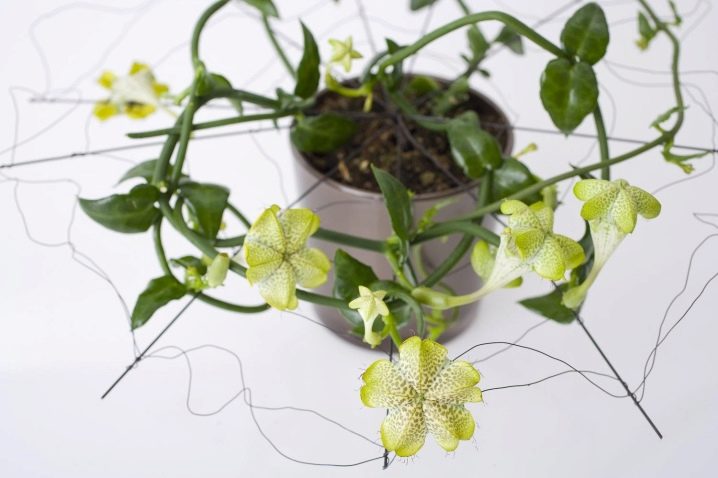
Watering
In the spring-autumn season, the succulent needs moderate humidity. Watering ceropegia is necessary as soon as the soil mixture dries well. The liquid flowing into the sump must be removed.
Dosed watering is shown for an indoor flower, but the soil should not be allowed to dry out. Water for irrigation requires filtered or well-settled water. Additional humidification is not required.

Fertilizer
There is no need to feed young bushes, they have enough nutrients contained in the substrate. Adult bushes require fertilization once or twice within 30 days. Top dressing is to be introduced from early spring, ending in the second half of autumn.
Suitable for this purpose complexes of minerals in the amount of 1⁄2 of the dose that is recommended for use on the package. This succulent plant shows abundant flowering, and no additional problems arise with this process.
Ceropegia does not need planned pruning. This manipulation is performed purely for an aesthetic purpose, to shorten overgrown (broken) shoots.
Periodically, the plant can be pinched to stimulate branching of succulent stems: a lush crown is much more attractive to plants than long, but bald stems.
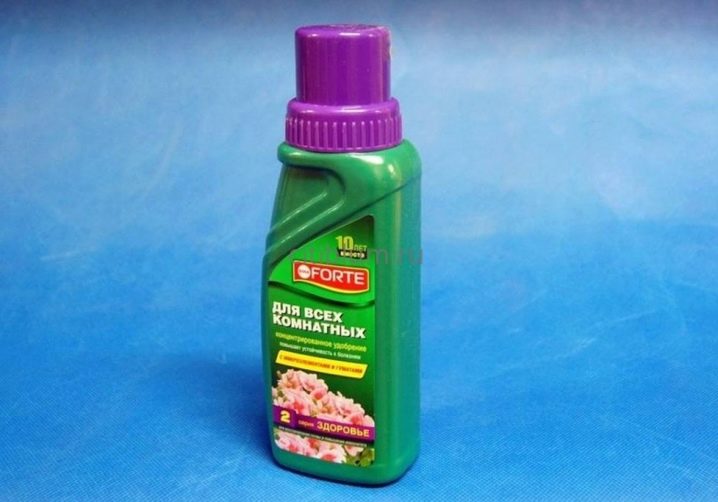
Reproduction
An indoor plant can be propagated in a variety of ways.
Cuttings
Cuttings are harvested before the beginning of the increased growth of the succulent, in the spring. The stems are carefully cut, dried, and then transferred to rooting containers. It is important to water the cuttings moderately, keep in a cool, but well-lit room. It is important not to forget to protect ceropegia from scorching rays.
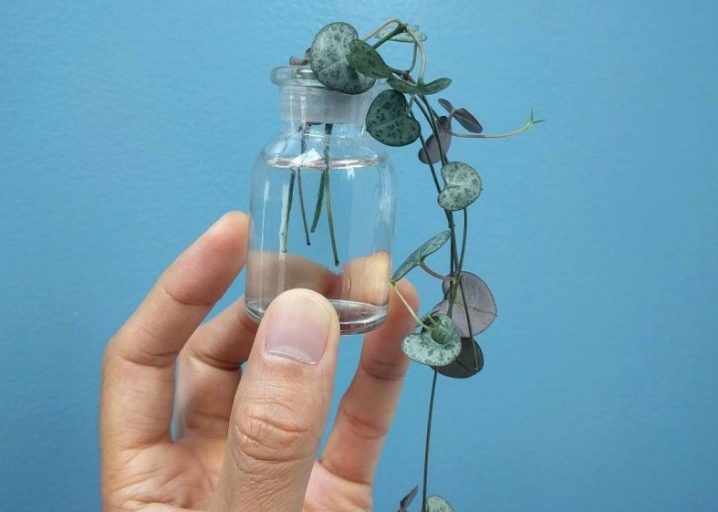
Seed method
The prepared dishes are filled with soil mixture, where the seeds are sown. Sprinkle them on top with a layer of substrate and cover with cling film. Prepared containers are left in a warm room.Before the seedlings appear, the soil must be kept sufficiently moist.
The picking of seedlings is recommended after they grow up. The care is identical to that used for growing adult specimens.
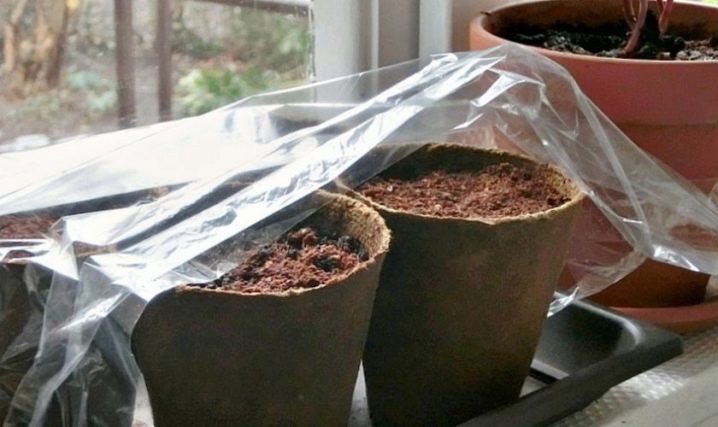
Rhizome division
This method is relevant in the process of transplanting a bush. It is divided into several parts (usually 2-3), depending on the size of the plant, and then the cuttings are moved to separate containers with drainage and soil.
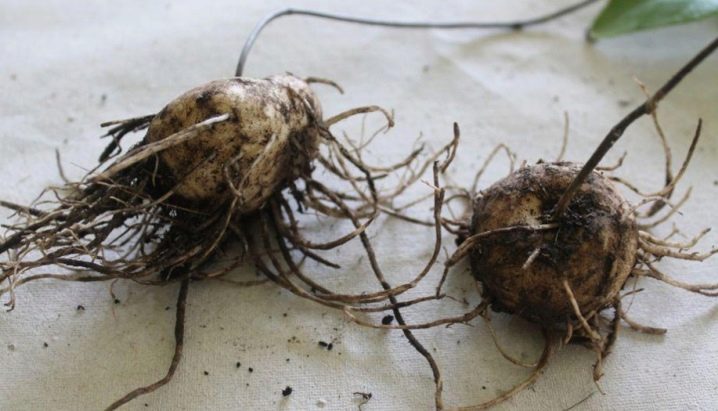
Air tubers
So you can reproduce some species, for example, Wood's ceropegia. To do this, the stem of the succulent is divided into several parts, on each segment of which there should be nodules and at least 2 leaves.
Planting cuttings for rooting is carried out in the sand. Only after the roots appear, they are seated in pots. If you want to grow a thick and lush bush, it is better to plant several cuttings in one container.

Diseases and pests
Basically, the succulent is sick due to improper care. Insufficient drainage contributes to stagnation of water, which provokes root rot. The same thing happens with over-watering. In this case, the succulent sheds its leaves and stops flowering. It will not be possible to save the plant. You can save it by rooting cuttings, selecting for this the least damaged stems.
Lack of lighting leads to the fact that the plant turns pale, leaves curl, and flowers almost (or not at all) appear. This can be easily corrected by the correct position of the plant relative to the light source or by adjusting the backlight for the winter period.
With a reddish tint and the appearance of burns on the leaves, the succulent signals an excess of sunlight, in other words, it burns out.
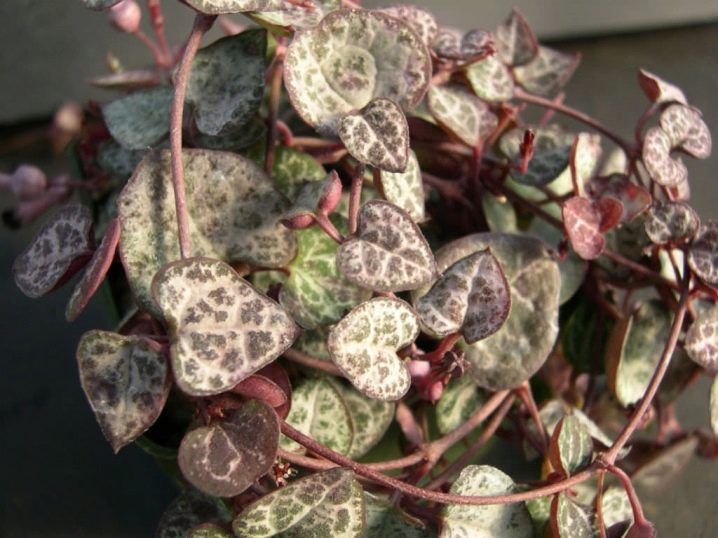
The lack of moisture is indicated by thinned leaves and slow growth of ceropegia. Do not pour a lot of water into the pot at once. It needs to be poured in portions, and fertilizer should be added to speed up recovery.
Pests infest succulents extremely rarely, since the juice in many of its types is poisonous, which scares away and destroys the sucking pests. But if a spider mite or an accumulation of mealybugs is noticed on the plant, it must be treated with a soapy solution, trying to prevent liquid from entering the soil. If you have to nurse a neglected plant (this happens both with a purchased specimen from a store and with a purchased one from friends), and the parasites have multiplied en masse, it is better to use insecticides created specifically for indoor crops. First, you must painstakingly study the printed instructions attached to the drug.
























































The comment was sent successfully.